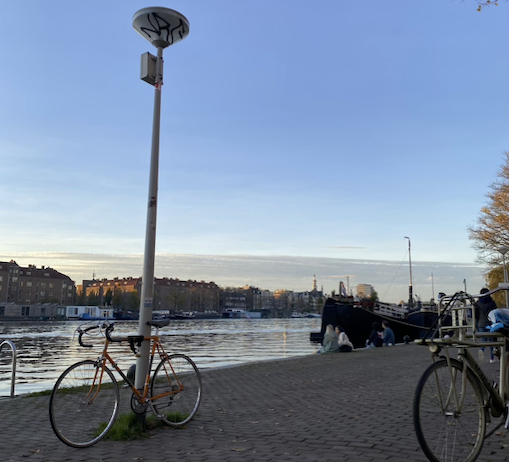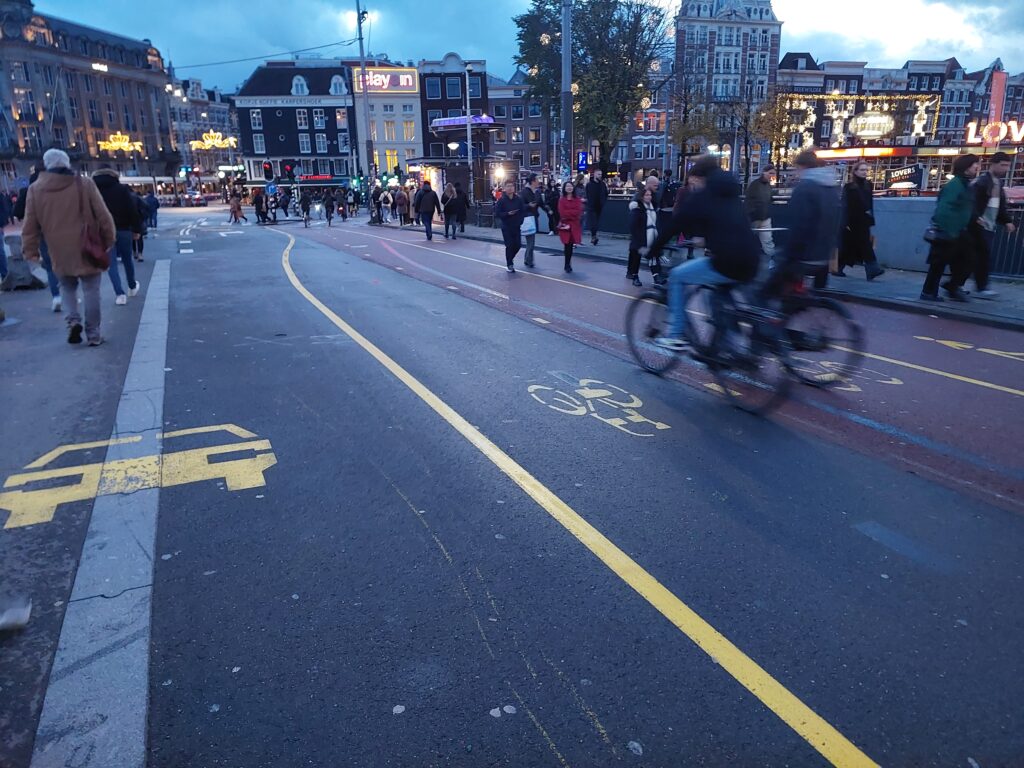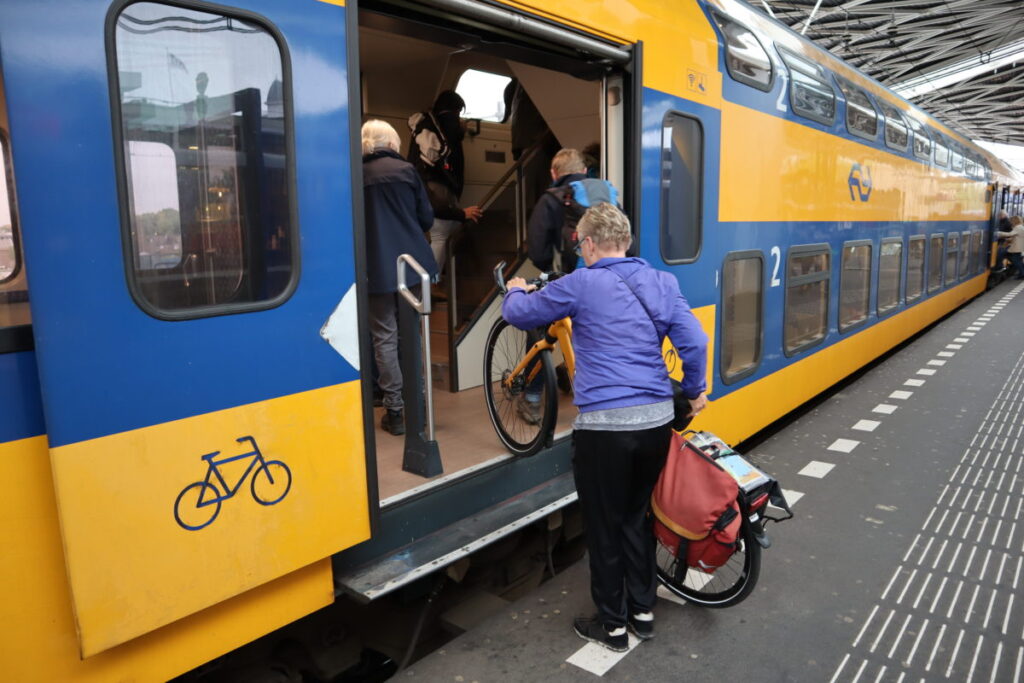Martin Gibson | Twitter | Email
Most Inspiring Essay Finalist, February 2020
Active travel practitioner based on the Isle of Wight in the UK
Unraveling the Cycling City MOOC on Coursera
I have approached this course from the perspective of a UK-based active-travel practitioner with experience of cycling conditions around the UK, as well as in the Netherlands and a little in Scandinavia. I have observed and been involved in numerous programmes aiming to “encourage” people to cycle more which have all shown little or no real impact. For many years I have been an advocate of an infrastructure-led approach. It appears that what is needed is to create an environment where people feel safe and comfortable cycling, and that means separation from motor vehicles.

A key question for me that has emerged from the course is – is that enough? Will that provision on its own lead to a change in the numbers of people cycling for transport, and will it make that change fast enough?
I have been wary of the concept of The Netherlands having a “cycling culture” as it often plays to the narrative of “but the Netherlands is different” and “Dutch concepts simply won’t work here”. However, the course has helped me understand more about the importance of culture, and also to grasp the fact that culture is not an immutable concept, but is something which can change, by accident or design.
While I was aware of the history of the fall and rise of cycling in the Netherlands Oldenziel and de la Bruhèze (2011) brought some interesting perspective:
the rebuilding of many severely damaged European cities offered policymakers and urban planners the opportunity to realise their pre-war blueprints of modern mobility. The postwar rebuilding plans turned out to be the tipping point in what had thus far been a contested terrain with trends but no clear winners
Oldenziel and de la Bruhèze, 2011
Without the massive rebuilding programme post-war change may well have been slower and the virtual eradication of cycling may have been avoided in countries like the UK. This acceleration of a social trend towards motorisation through re-imagined urban spaces where the cycle had no role is highly influential, and the cultural and physical impacts are still highly evident.

In their (policymakers and urban planning professionals) technocratic approach, they cast cycling as dangerous and irresponsible, unbefitting modernity and progress
Oldenziel and de la Bruhèze, 2011
It is easy to see the demise of cycling as a serious mode of transport in many European countries as a natural change, increased wealth leading to increased uptake of private cars, greater convenience and comfort from use of cars etc. However, it is important to consider that the demise of cycling was actually catalysed by narratives which explicitly sought to replace cycling with cars. The effects of that characterisation linger on and pervades many current views of cycling and cyclists. The “othering” of cyclists is a persistent problem in trying to garner support for pro-bicycle measures. This culture could hold back the development of cycling, with pro-cycling measures attracting heavy criticism, even if there is strong evidence to support their introduction. Ironically public support for improvements to cycling infrastructure is actually high (see, for example, SUSTRANS Bike Life report) yet car-culture still dominates.
There is, however, a fundamental dilemma when trying to make urban development less dependent on the car: the inability of most alternatives to match the quality of accessibility provided by private motorized transport.
Bertolini, and le Clercq, 2003
It is important to grapple with this issue – there are reasons why cars are popular. Without matching the quality of accessibility, alternatives are not likely to reach their full potential. The car is embedded into our transport planning system, our land-use planning system, our retail patterns, our commuting patterns and many other areas of our day-to-day lives in the UK. For many the car is the first and only mode choice. For cycling to become mainstream in the UK it either has compete with the car. But is that a head on competition?
Typically cycling audit tools look at functional issues relating to facilities and networks.
Forsyth and Krizek 2011
It could be argued that in the UK context even doing this is massive progress. However, understanding the social context of cycling could help lead to better designed facilities – even at a practical level. There is, perhaps, a risk that as we move from seeing cycle infrastructure as “pedestrian +” to designing for bicycle traffic that we could see cycle traffic design as purely an engineering function, and ignore the fact that people cycling are very much an integral part of their surrounding environment, unlike motorists who tend to simple pass through an environment.
This plea for the unpacking of the black box of travel by developing a more nuanced understanding of the journey is echoed by mobilities researchers who have conceptualized travel in terms of meanings and experiences.
Liu et al. 2019
Some of the key gains of cycling over driving come about through the greater experiential element of travel – failing to capitalise on these means missed opportunities to encourage more trips to be made by bicycle. Exploiting cycling’s unique benefits and ensuring these are maximised in developing plans to make changes to our urban fabric could help create a resurgence of cycling, even within a car-centric culture – effectively creating a positive sub-culture, which in turn could become mainstream.

I would suggest we also need to start changing the narrative around cycling; to break away from the car being “normal” and cycling being something “other than a car”. Perhaps cycling needs a new language, one less about sport and fitness and more about interaction, landscape and a sense of place.
The Netherlands never completely lost its cycling culture. The UK did. It needs an approach that will create a new culture, rather than simply bolster one that is already there. Is it time for a new UK cycling culture, built around community, places, and behaviour?
My key question to take away is:
How can this influence developments in the towns I am working in?



